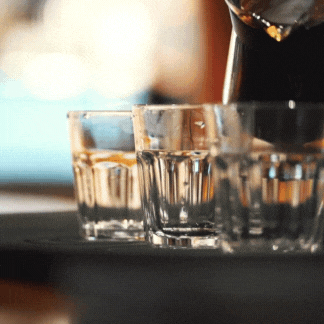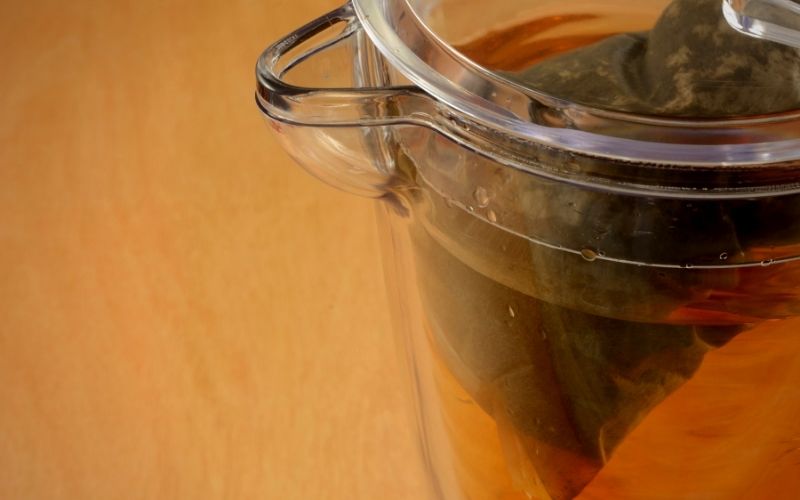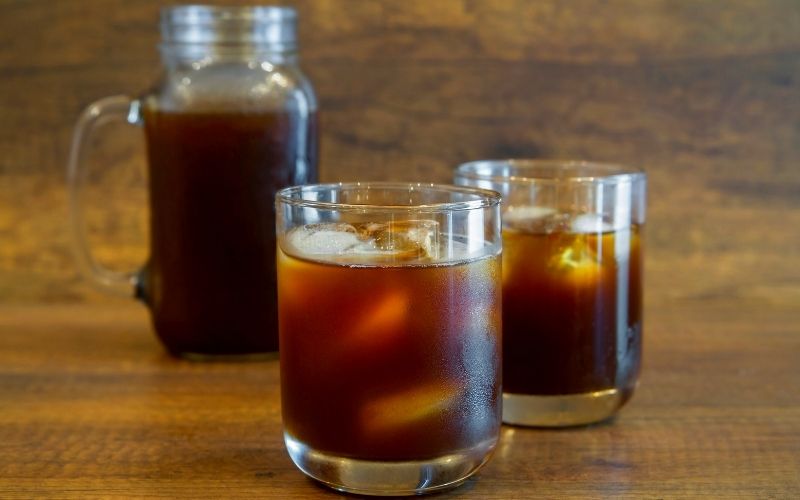There are few things sweeter than that first sip of coffee in the morning.

It revitalizes focus and offers up the energy and alertness to make it through yet another day. While a cup of steaming hot coffee is many things, there is one thing that it is not – refreshing. Fortunately, coffee is versatile and can be prepared as a cold brew at home, or you can opt for an iced coffee.
Let’s take a look at how to make cold brew coffee at home.
What is Cold Brew Coffee?
Cold brew coffee is smooth and highly caffeinated, with comparatively less acidity, and can be enjoyed both as hot or cold coffee. Easy to make and cool to sip on, cold brew coffee is refreshing and affordable.
Cold Brew vs. Iced Coffee
While cold brew coffee and iced coffee may seem similar, there are a few key differences in their preparation. Iced coffee refers to the process of preparing hot coffee and pouring it over ice, while cold brew is created by soaking coffee grinds in cold or room temperature water. While timing varies for flavor preference, steeping time usually exceeds 12 hours. This process is effective in extracting sugars, oils, and caffeine.
Nitro cold brew, a trend made popular in the early 2010s, is a cold brew made by infusing nitrogen gas through a pressurized valve. Known for its velvety smooth finish, nitro cold brew at home is a more complex and expensive process than cold brew coffee, with little difference in flavor.
How to Make Cold Brew Coffee at Home

There are essentially three ways to prepare cold brew coffee. While the holding container may differ, the process is relatively the same and doesn’t require a coffee maker.
Five Easy Steps to Make Cold Brew Coffee
Follow these five easy steps to make your own batch of affordable cold brew at home. Notably, the cold brew ratio measurements should be as follows: 8-cup French press, 5.5 tbsp of coffee grinds (82 grams), 16oz of cold water. This cold brew coffee recipe can be adjusted according to the desired batch size and drinker preference.
- Grind the coffee coarsely: Grind the chosen coffee beans to a coarse grind and add the ground coffee to a preferred holding container. Examples include a mason jar, pitcher, cold brew coffee system, or a coffee press for French press cold brew.
- Cover in water: Pour cold or room temperature water over the coffee grinds, covering them completely. Stir the ground coffee and water to ensure all grinds are wet and submerged.
- Enclose the holding container: Cover the grinds-water combination with a lid. If using a coffee press, simply cover but do not press.
- Allow the brew to set: Place the grinds-water combination in the fridge and allow it to sit for 16-20 hours to favor a desirable cold brew concentrate.
- Filter cold brew: Using a cheesecloth, slowly filter the cold brew from the coffee grinds. Be patient with the process, as hurried filtering may result in a bitter-tasting cold brew.
Once the cold brew is filtered, it can be warmed, cooled, or simply enjoyed as is. While some people steep their coffee for 16-20 hours, this can be adjusted to suit different preferences. We found that the sweet spot is brewing for 10 hours at lower temperatures.
Benefits to Cold Brew Coffee

Beyond its refreshing sensation, cold brew coffee is more flavorful, versatile, highly caffeinated, and less acidic than its drip coffee counterpart.
More Flavorful
As cold brew coffee is prepared by steeping coarse grinds in cool water for an extended time, the process allows for more flavor to enter the water. Cold brew coffee is smooth and delightful, with minimized bitterness.
Less Acidic
As the coffee grinds are steeped in the cool water, they release oils and tannings. As a result, the coffee is less acidic, proving to be easier on the stomach and less likely to stain teeth.
Highly Caffeinated
Dependent on factors like beans used, steeping time, and dilution, cold brew coffee is typically far more caffeinated than drip coffee. Generally, cold brew coffee yields twice the amount of caffeine as regular coffee, if not more.
Versatile
Coffee brewers can enjoy cold brew coffee’s flavor, reduced acidity, and increased caffeination, either cool or warmed. Simply enjoy the cold brew as it is, or warm it to the desired temperature to enjoy a hot, cold brew while maintaining the benefits of its steeping process.
Key Considerations When Brewing Cold Brew

There are a few things you should consider when learning how to make cold brew coffee at home.
Use a Coarse Grind
A larger grind prevents the brew from becoming bitter in its steeping process and makes the grind-water mix easier to filter when its steeping window ends. An ideal grind size would be equivalent to a grain of raw sugar.
Coffee to Water Ratio
A higher cold brew coffee ratio, ideally one ounce of coffee grind per one ounce water, ensures a strong and flavorful batch of cold brew. It is also an easy ratio to adjust based on desired batch size.
Slowly Strain Water From Grinds
Using cheesecloth and a strainer, the cold brew needs to be strained slowly and carefully from the grinds. Straining gently and not squeezing or pressing the coffee grinds will result in a smooth cold brew. Avoid coffee filters as they often tear or require additional time to film the cold brew.
Be Mindful of Storage Time
If stored as an undiluted concentrate, cold brew will keep well in the fridge for up to two weeks with reduced flavor quality after one week. If the concentrate is diluted with water, it will keep in the fridge for only two to three days.
Wrapping Up

Coffee lovers can easily make different drinks at home, such as latte, cappuccino, whipped coffee, pour over coffee, etc. DIY cold brew coffee is easy to make and is an excellent alternative to homemade iced coffee. Benefits of home brew coffee include improved flavor, reduced acidity, and heightened caffeine. It is also a versatile enough drink which can be enjoyed both warm or cool. Its known benefits are popular amongst drinkers, and it is a popular topic among coffee lovers in forums and other social media.
Key considerations include selecting a coarse coffee grind, preparing a high coffee to water ratio, storage time, and slowly strain the grinds from the water. Regardless of the trendy coffee recipes that come and go, making cold brew coffee continues to stand the test of time because of its simplicity and added benefits, making it one of the best ways to make coffee.
